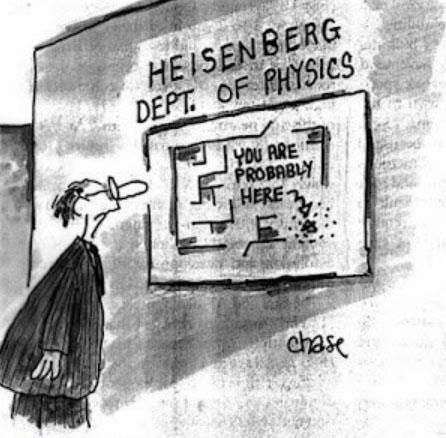Why You Should Have Paid Attention in Grade School -- Feynman Diagrams
- particleexperience
- Jul 16, 2019
- 3 min read
Updated: Jul 19, 2019

Having established a recipe for analyzing the dynamic evolution of Quantum Mechanical systems, Feynman next turned his attention to the task of using his method to make predictions. Which brings us all the way back to where we wanted to go in the first place: making predictions in the context of Particle Physics/Quantum Field Theory.
The main question asked in Particle Physics is encapsulated in the overarching question of Quantum Physics, but can be stated more directly as the following:
3) Given an initial particle state, what is the probability that a final particle state will be realized?
To think about this question, it is helpful to give a concrete example. An electron and its antiparticle, a positron, annihilate each other. What is the probability that a muon and its antiparticle will be created?
If this sounds like a difficult question, it’s because it is. We know exactly what we have to do. We need to compute the probability amplitudes for every possible way this final state could be realized by determining the action associated with each. Then we need to take the Path Integral, that is, sum the amplitudes taking account of their phase, and square the result to find the probability. In practice, however, the calculations associated with this problem are simply too difficult to complete exactly. But by now you should know better than to doubt the cunning Physicist.
Feynman devised a truly beautiful technique for approximating the true probability up to a given order of accuracy (e.g. right to a certain number of decimal places: if the true answer was .1, Feynman’s technique might produce a result like .0999999). This technique is called the Feynman Diagram. The Feynman Diagram takes the task of computing the Path Integral and transforms it into the task of interpreting a drawing, like this one:

Every Feynman Diagram is made up of three parts which can be mapped to the objects we’ve been discussing in our analysis of the Standard Model.
1) External Lines: Represents incoming and outgoing particles – these are the Standard Model Particles which are interacting
2) Internal Lines: Represents virtual particles – these are the messenger bosons which carry out the information about the interaction
3) Vertices: Represents the interaction itself – these are related to the three fundamental interactions of the Standard Model: Electromagnetic, Strong, and Weak.
Each component of the diagram is associated with a numerical object (strictly speaking a Quantum State or Operator). The probability amplitude of the total event is simply given by the product of these numerical objects. One then needs only square that result in order to determine the desired transition probability.
The computation utility of Feynman Diagrams cannot be overstated. They form the foundation of how Theoretical and Experimental Physicists make predictions about events in Particle Physics. Perhaps more importantly, however, Feynman Diagrams provide a powerful tool for visualizing and understanding otherwise brutally sophisticated and mathematically complex ideas in Particle Physics.
When you look at a Feynman Diagram the most important thing you can take away from it is what it represents. It represents all the possible ways the initial state particles (on the left) can be taken into a final state configuration (on the right) through the intermediary of a fundamental interaction (on the vertices) carried out by a messenger boson (in the middle). Moving forward, Feynman diagrams will be one of our main tools for communicating and explaining how different phenomena take place in the universe.


Comments